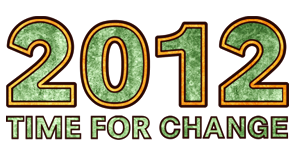-
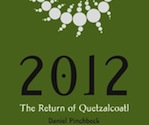
Inspiration
2012: Time for Change is the result of a collaboration between many people, but most especially between director Jo?o Amorim and author Daniel Pinchbeck.
As Joao tells the story:
One late night near the end of 2006, in an East Village apartment, I was engaged in a long conversation with some Serbian friends. One of the Serbs, Nino, started talking about 2012 and Daniel Pinchbeck. Being a skeptic, I initially dismissed the talk as New Age nonsense. Nino insisted it wasn’t crap, and eventually convinced me to go get Daniel’s book.
While reading it, I could not help but find myself identifying profoundly with the views expressed in it. The idea that we are steadily moving toward oblivion, that somehow our system has enslaved us to an erroneous notion of time, and that we need to re-align ourselves with the natural world and evolve our consciousness, had a profound resonance with my own ideas. The book revived many of my earliest ideals, and also memories of my own shamanic experiences, which I had suppressed as I entered the working world, running large-scale animation productions and directing commercials.
By the time I finished the book, I was convinced that a movie around these ideas, one that combined an investigation into our potential for conscious evolution with practical solutions, was absolutely necessary. I also realized that my skills in animation could help illustrate these ideas, creating a compelling narrative that could help people in their own process of self-realization and the actual work of transformation.
Seized with inspiration, I wanted to find this Pinchbeck character, as I knew he lived in New York City. I tried to get in touch with my Serbian friend, but he was away. A few weeks later, I ran into him and asked him about Pinchbeck. He did not have his number but said he would try to find it and get back to me.
Anxiously after a week, not having heard from Nino, I called him. Nino said he had bad news, as he did not know how to get a hold of Daniel. Five minutes later, I’m at a friend’s house staring at Daniel’s book cover, feeling quite frustrated, when the phone rings. It is Nino, he had just run in to Daniel who told him I should call him. Synchronicity is a major theme in the book, and this was a nice synchronicity, I thought…
From then on Daniel and I became friends and colleagues. Our first project was a a short film entitled “Toward 2012”, featuring groundbreaking animation that explored Daniel’s ideas on the evolution of consciousness and the nature of time. We formed the company Postmodern Times with Nikos Katsaounis and developed the animated series “Beyond 2012, Perspectives on the next age”, (available on DVD through UFOTV). The series lead eventually to the development of a treatment for an animated feature documentary, “2012 Time for Change”. Giancarlo Canavesio from Mangusta Production loved the project and partnered up with Postmodern Times and Curious Pictures to bring this dream to life.
Jo?o AmorimAs Daniel tells the story:
After 2012: The Return of Quetzalcoatl came out in the spring of 2006, I was approached by a number of New York production houses and directors. I met with them but somehow wasn’t inspired to want to work out a deal with any of them, until I met Joao Amorim. As soon as we met, I knew he was the guy. His passion for the subject and his intelligent understanding of the ideas were very inspiring to me. We became fast friends and colleagues. While I sparked the project, this amazing film is the result of Joao’s incredible persistence and artistic vision. I believe it will be watched and studied by people for many years to come.
Daniel Pinchbeck 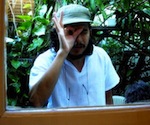
2012: Time for Change is an independent documentary with animations exploring our current time of crisis, the potential for an evolution of consciousness, and solving our problems through ecological design. The film was shot using Panasonic HVX cameras and lav mikes, which allowed our subjects the maximum amount of mobility in frame. The production began by following Daniel around at conferences including: The Los Angeles 2012 Conference The World Psychedelic Forum in Basel, Switzerland The Left Forum in New York City Greenfest San Francisco At these conferences, Daniel not only gave his own lectures, an essential element in the film, but he also interviewed different luminaries, activists, and visionaries in various fields. Additionally, Daniel and Jo?o visited permaculture schools, yoga studios, Shamanic ceremonies, Ecological design centers, and research centers using scientific methods to investigate psychic phenomena. Having collected over 200 hundred hours of interviews, the material was then transcribed. From those transcriptions Jo?o pulled selects to create an 8-hour assembly. That is when Editor April Merl joined the action. With the assistance of Pedro Tarrago and the wise counsel of Chris Seward, April proceeded to wrestle the beast into a film. The editorial process was extremely tight, requiring less then 8 months to complete.
-
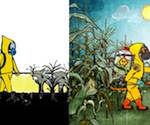
An animation director by trade, Amorim planned from the start to use a number of animated sequences in the film. The initial storyboards for some scenes were done up to a year before the beginning of animation production. Artist Pedro Tarrago working closely with Jo?o Amorim to develop the majority of the original storyboards. From the boards, animatics were created. These are essentially rough boards that have been put in a time line. The boards were then passed on to Animation Art Director Dustin Lindblad, a longtime collaborator of Amorim’s, an extraordinary artist and graphic designer. Lindblad developed beautiful boards that a group of animators, led by Mark Rubbo, brought to life. Curious Pictures’ Lewis Kofsky ,was key to the process as well, assuring we could get the most out of our animation team, on a very tight budget. The animation was completed in less than 6 months.
-
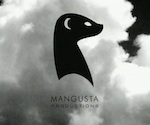
The current state of the independent film industry is challenging at best. Therefore, we as filmmakers have decided to take matters into our own hands. In the development stages of creating this documentary we established a distribution strategy that would enable us to get the film out to the world without the need of a big distribution company. We raised P&A (Print and Advertising) money as part of our production budget and set it aside in order to implement this strategy. Knowing that this film is talking about sustainability and conscious evolution, we planned on releasing the film directly to our core audience in a way to generate awareness from the ground up. The idea of this is to generate discussions about the solutions we present and the possibility of making the world a better place for future generations. Our goal is to bring the film to pockets of the country where there is immediate interest and use that interest to expand awareness to a wider audience. Since our budget is limited, we decided to partner with organizations and festivals (The Green Festivals, Boom, Bioneers and more) that would provide concentrated groups of people who are already interested in this discussion. From there we will book screenings in and around these events and offer material to engage the audience in that discussion. This is a strategy that only works if people get involved, much like the solutions we present. Without personal involvement change can?t happen and without personal involvement in this film, it won?t be seen by the masses who desperately need to become aware of what they can do to better themselves and their communities. We want the film to be the calling card for this movement and show that 2012 isn?t about death and destruction, but about an amazing opportunity to shape the world into a more sustainable, eco-friendly and spiritually positive place for the future. We ask you as a viewer to take part in any way you can to help this film spread and to help the movement grow. If you like the film and the movement, talk about it, blog about it, share the information with those you care about and anyone you think will be receptive to it?s message. Take action. Take initiative. EVOLVE TO SOLVE!
